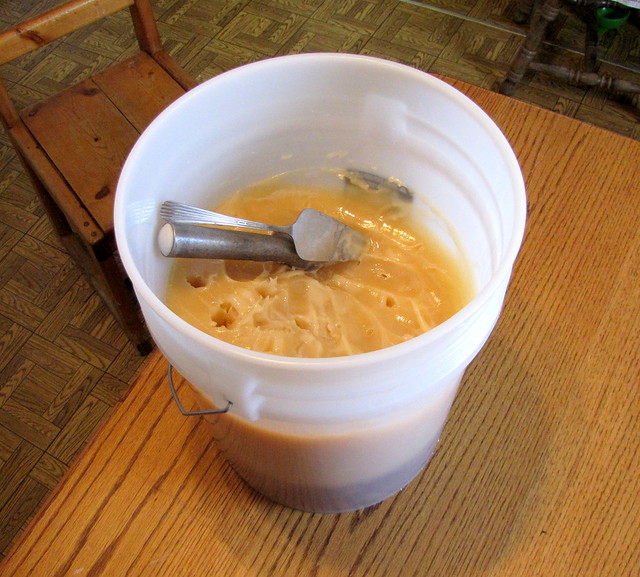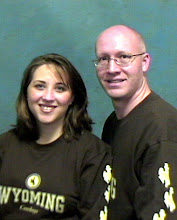The weather has been very mild lately with daytime temperatures getting up around 60 degrees Fahrenheit (15.5 degrees Celsius) and the bees have been out all over the yard. I feel kind of sorry for the little girls- out looking for pollen and nectar but not finding anything to bring back home.
Yesterday I was watching the hives and noticed that Ida and Svetlana had a lot of bees coming and going but Georgia did not have a single bee around her entrance. Just a few days ago I peeked in on Georgia and saw a large cluster covering the bee candy I laid on top of her frames a few weeks ago, so I knew that she was still alive. I surmised that maybe she had too much debris, dead bees, etc. blocking the inside of her entrance to allow any bees in or out. I decided to suit up and see what was going on.
I popped Georgia's top off, removed the remaining bee candy, and found a large cluster of bees. Georgia has come through the winter in great shape. This does worry me a little; if her population grows too big I might not be able to prevent her from swarming. Now, I had not been inside the hive since last September- it is amazing how solidly the bees can glue everything together in 6 months. It was a real bear to get things separated and taken apart.
I did eventually succeed at getting the two deep hive bodies taken apart and got a view of the bottom board. It was surprisingly clean. I don't know why the bees were not out flying like the other two hives but there was nothing blocking their way. I also found that the hive was very light. The bees had consumed all but a couple frames of honey and were packing the bee candy away into the empty comb. I didn't have a lot of time yesterday so couldn't do a really thorough job of cleaning out the hive, unsticking all the frames, removing the excess burr comb, etc. One of these days when I have a good afternoon I will have to get out, clean out the hives, and give each of them some sugar syrup.
I did take a couple of minutes to look through Svetlana. She is a whole other story. Last year we decided to start our third hive with a package of Russian hybrids which we named Svetlana. She never did take off last year and only filled up a partial medium super of honey on top of her two deep hive bodies. Her bees were also more aggressive than the bees in our other two hives of Italians and Carniolan/Italian hybrids. They were not so aggressive as to bother us in the garden but they were not very easy to work with in the hive. Last fall I decided to take all the honey I could from her deep hive bodies and left only the frames that contained brood. I ended up condensing her down to one deep hive body with only nine frames, none of which were completely full of honey as each one of them contained brood. With such a small amount of honey I assumed she would die out over the winter and I would be able to split one of my other two hives into her vacated hive bodies.
With only nine partial frames of honey left for her last September, no fall feeding, and no supplemental feeding over the winter, she has survived with a surprisingly strong cluster. Here are a couple of pictures of what she looks like now.
She still has two frames full of honey, one frame partially full, and honey in the burr comb the bees built in the extra space. I pulled out a frame directly beneath the main cluster and found both capped and uncapped brood. Looks like this queen is already getting busy. Talk about hardy bees! With the way these gals came through the winter I cannot bring myself to let them die out. So these Russians will get another chance.
We are only half way through march but it looks like spring is here. Here is a photo of what our pussy willow looks like right now.
In just a couple of weeks all those fuzzy white catkins will pop out in yellow blossoms and the bees will go nuts on their first pollen source of the year.














































